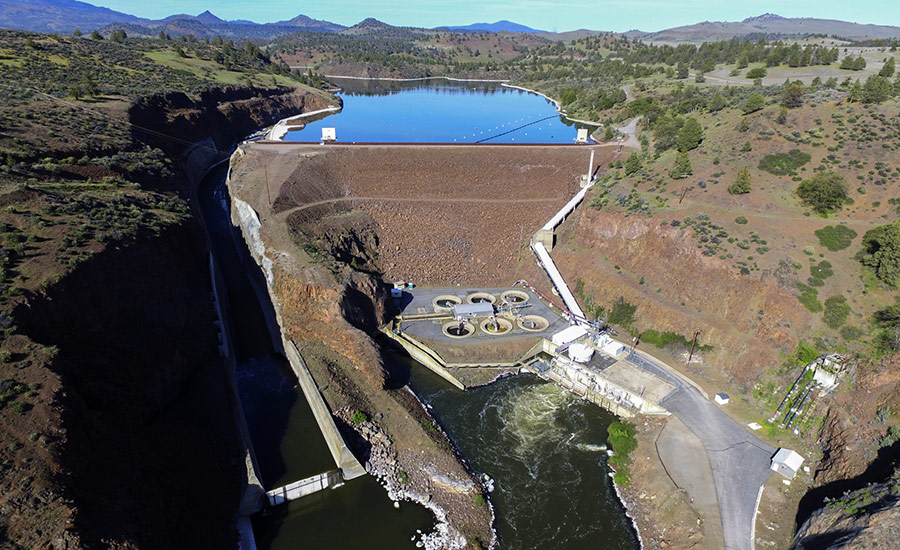
Project is the largest dam removal and river restoration effort in US history.
The Federal Energy Regulatory Commission has approved the removal of four dams on the Klamath River in Oregon and California. The Nov. 17 decision to surrender the license on the dams is the final decision needed to allow the history-making project to move forward.
With the action, the agency’s five commissioners reaffirmed the conclusions in their final environmental impact statement – released August 26 – concluding that the benefits of removing the four dams outweigh any adverse impacts, including those raised by opponents.
In the order, the FERC Commissioners wrote that after weighing the environmental benefits with the potential adverse effects, “We find that license surrender, decommissioning, and removal of the project developments are in the public interest.”
The FERC decision is the culmination of years of efforts by a wide and diverse range of groups ranging from the Yurok and other tribes, the states of California and Oregon, and the Klamath River Renewal Corporation (KRRC), the non-profit entity formed to restore the Klamath River.
Supporters say the project will improve water quality and restore the ailing salmon population in the Klamath River. Opponents have argued that the removal of the dams would reduce the amount of water stored in reservoirs for wildfires, recreation and flood control.
The decommissioning process will begin once KKRC and the states of Oregon and California review the conditions of the surrender and formally accept the transfer of ownership of the dams from PacifiCorp, KKRC, and the states. KKRC’s CEO Mark Branson said the decision is a significant milestone in “the largest dam removal and river restoration effort in U.S. history.”
“As Yurok tribal people, it is our sacred duty to bring balance to the Klamath River,” Yurok Tribe Chair Joseph James said in a statement. “At its heart, dam removal is about healing and restoration for the river, for the salmon, and for our people. We have never wavered from this obligation and we are pleased to see dam removal come closer to reality.”
Early pre-drawdown work could begin as soon as March 2023. Early activities will include demolition of recreational areas, construction or roads and bridges, excavation of a low-level outlet tunnel through one of the dams. Draw-down of the reservoirs and dam removal are expected to begin in January of 2024, KKRC says. The project is expected to take 20 months, with five years of monitoring conditions like water quality and environmental restoration after the dams are removed.
The U.S. Army Corps of Engineers is still considering a Section 404 permit for the project under the Clean Water Act that would authorize placing approximately 212,000 cu yards of fill material within 20 acres of the Klamath River.
Although the project had a wide range of support, environmental advocacy groups and others, including the National Hydropower Association, contend the current decommissioning process takes too long and does not incorporate enough input from Tribes.
In a Nov. 17 blog post, Brian Graber, American Rivers’ senior director of river restoration noted that PacifCorp agreed in principle to transferring ownership of the dams in 2010. “It took 12 years after PacifiCorp agreed to remove the dams in principle, and 22 years after they first started the relicensing process, to finally determine the fate of the hydropower license and the dams,” he said.
Credits: ENR

